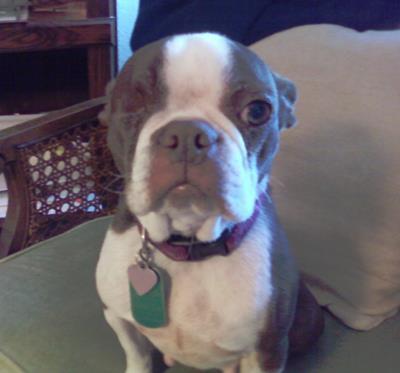How to Write Your Bio
Virtual isn’t going anywhere and hybrid is the new buzzword. And that means more and more availability for brands to reach more people…which also means more people speaking, more people podcasting, more people Facebook Live-ing – yea we know, not a verb…yet, but you still can’t deny that you are seeing more and more events with speakers and people being interviewed online.
One of the things everyone has in common with all of those ways to connect with people?
Your bio.
It’s likely that many people have to write a bio who didn’t before. People are speaking and being interviewed from their home office, living room, or bedroom, which means, they must, before anything else, write a bio.
For our weekly All Pet Voices COFFEE Chats, we receive lots of bios. We always pull out certain pieces and leave the rest for the discussion, and it made us think that we should give some guidance on creating your bio.
What is the Purpose of a Bio?
A bio is written to tell an audience who you are and what you do. In other words, it gives them some facts about you. Your bio can be a place where you highlight your accomplishments. What about Aall the things that you might feel less than humble saying if you shared them yourself? Those facts belong in your short and long bios because someone else is reading it. They get to boost you up and you get to thank them afterwards.
Let’s Break Down the “Who You Are” and “What You Do” Pieces
Who you are. It’s simple and short. This answers the questions of:
- What titles do you go by?
- What do people you work with call you?
What you do. This is the results you provide and the ways you provide them, plus your awards and accomplishments if they easily fit. What do you help people or companies do? If you said you are a New York Times bestselling author in the who you are part, what book did you most recently write, or what book did you write that sold the most copies or received the most awards? Give us some facts about you and support them with accomplishments, but keep it short and don’t go into the full story or process.
What Doesn’t Belong in Your Bio?
Your mission. Your beliefs. Your process. Anything that is about your perspective.
That is for you to share and not for someone else to introduce. Whenever we receive a bio for our All Pet Voices COFFEE Chats that includes the story about why someone is passionate about something or what they aim to change in the world, we immediately move that part down to the Q&A. It’s simply not for us to share. If it’s part YOUR story, it’s for YOU to share.
Understanding Who the Bio is For
Your bio is for the people listening to you, whether on a podcast, presenting at an event, in a Facebook Live interview, or anything in between. Different audiences may care about different things, so when you are creating your bio make sure it will speak directly to the audience it was written for.
The Types of Bios You Need
There are 3 types of bios that are helpful to you and to the person you are sending them to:
- Byline bio.
- Short bio.
- Long bio.
The Byline Bio
This is just like it sounds, a line that tells you who something is by. It started in print and has moved to being spoken. That means it’s super short. It’s great for using in interviews. When someone is introducing you for an interview you want them to be quick. Your byline bio has a sentence of who you are and a sentence of what you do, in the most simple form. If you can fit both into one sentence, even better.
My byline bio for an interview: Chloe DiVita, also known as The Speech Choreographer, is a speaker coach and content strategist who helps speakers, writers, and executives share their message to create connection and impact.
It tells you who I am and what I do and introduces something that might have you wondering what it is. I only include that part, “The Speech Choreographer” part, if I know I can address it in the interview. If it’s not going to be addressed I leave it out. No need to create a curiosity that never gets filled.
The Short Bio
This is an extension of the byline bio that simply includes another couple sentences that help answer the two main questions of who you are and what you do. Think of it as offering up some proof to the byline.
My main short bio: Chloe DiVita, also known as The Speech Choreographer, is a speaker coach and content strategist who helps speakers, writers, and executives share their message to create connection and impact. She’s worked with New York Times Best Selling Authors, CEOs, TEDx speakers, Hollywood writers and directors, an NFL Referee, and people who simply want to communicate better. She doesn’t stop at people though, she has also worked with many brands through many industries – accounting, real estate, pet, travel, online marketing, entertainment – and more – helping each of them connect with and grow their audience.
This offers you some proof that I am indeed a coach and a strategist. It fills in some of the gaps that you might be wondering about what it is to be a speaker coach or a content strategist without actually telling you exactly how I do that. I sometimes mix this up to make it very specific for a specific audience, like the work I do with TEDxCambridge. In both cases you know the results I help people get: connect with their audience, impact their audience, and create memorable performances.
The Long Bio
This is an extension of the short bio and is where you should put the fun things about yourself. And, maybe a bit of what you stand for, what you believe, but only because this bio is not meant to be read or used to introduce you. A long bio is most often used to help provide guidance on who you are for an interviewer. It provides enough information for them to ask you questions without having to do a lot of their own research.
Try to avoid providing only your long bio with the expectation that the person receiving it will decide what they want to share about you from it. It puts work on the receiving party, and means they may not share the one thing you want them to share.
I only send a long bio when I’m doing an interview with someone who might not know much about me, or whose audience I know very little about. It includes awards I’ve won, some of my professional accomplishments, some specific names of people or brands that I’ve worked with that I believe will help the audience feel connected to me. It’s got a little flare of my personality: “Chloe lives in Denver, Colorado with her two dogs and Husband who accepts his position as fourth in line behind her daughter and her dogs.”
If you are not sure whether something belongs in your bio, but you want to share it, put it in your long bio.
But, Wait. Which Bio Do I Share?
Possibly all of them.
I keep a Google Doc that has three sections for each of my bios, and then a section with direct links that I would want shared. I only recently started doing this, after realizing how beneficial it is for us when we do our All Pet Voices COFFEE Chats. I highly recommend you do the same.
The byline bio should be the easy thing the person introducing you says out loud.
The short bio should be the thing they use in the promo materials or write up about the interview or presentation.
The long bio should provide them with the info they would find out about you if they did their own research on you. It’s helpful for interviews.
And sometimes you will take your byline bio and just add a sentence specific to the audience that it’s for. I did this recently for an event where I’ll be teaching how to have charisma on camera. I sent over a document that includes my normal byline bio, my short bio, my email and links to my site and social (with a note about which one is my preference for sharing), and at the top of the document I put a specific bio for the event. They had asked for a 3-line bio and I wanted to provide exactly what they asked for while still providing a bit more in case it comes in handy. I did not send my long bio because an interview is not a part of the event so no one really needs all that info.
Bonus Tip: I have a main bio Google Doc, and one for each event or interview that needs small tweaks. I simply copy the old one, think about the new audience, and make any tweaks that I feel are relevant for that particular audience – while still keeping the foundation of who I am the same.
By creating a one page document to share this information, you are providing the person on the other end exactly what they need, and with the tweaks you make for their audience exactly what they asked for. Win, win, win.
Maybe it’s time to take a look at your bio and give it a refresh?
About the Author: Chloe DiVita, BlogPaws CEO, has 15+ years of experience in digital marketing, the pet industry, and as a greyhound mom. She’s earned accolades like, Pet Age’s 40 Under 40 and Muse Medallions from the Cat Writers’ Association. Formerly Executive Producer for TEDxCambridge, she brings storytelling and public speaking to her work with creators, leaders, and brands. Read more…



